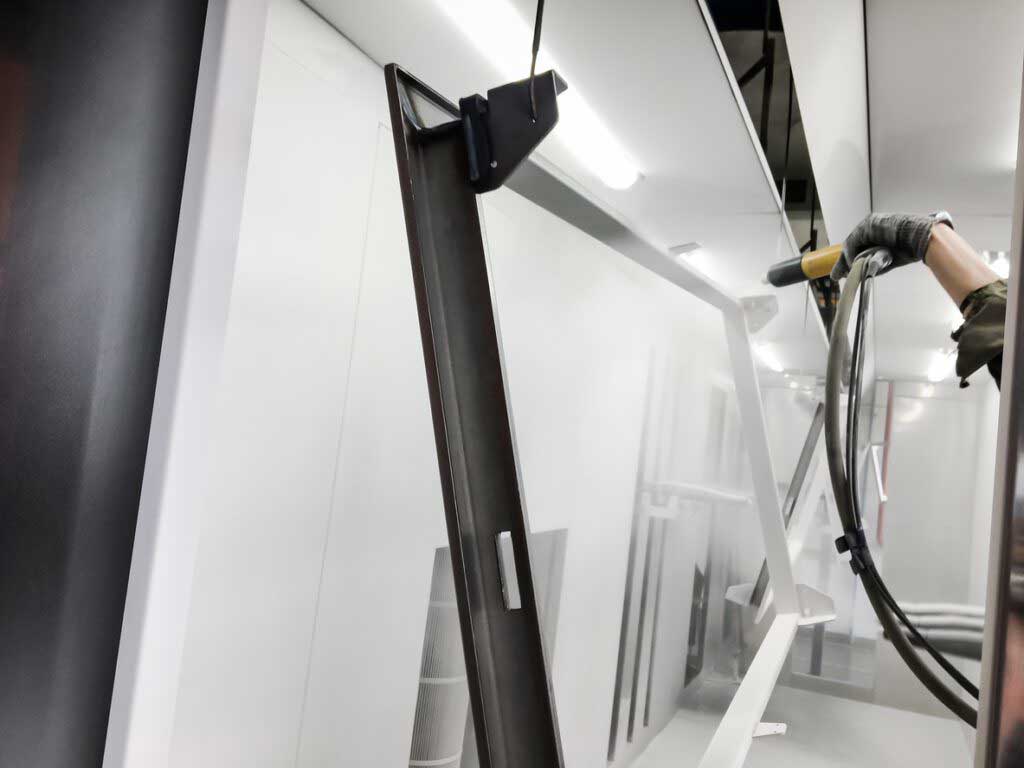
Safeguard Your Powder Coated Metal Against Damage
Powder coating gives metal a durable finish, allowing it to better withstand use and harsh environments. An expertly applied powder coated finish is much stronger and more flexible than paint, resulting in a long-lasting protective coating. This process is normally performed on industrial equipment, appliances, outdoor products, and automotive items among others. Before investing in this process, you might wonder how powder coating is applied, what the benefits are, and — most importantly — how to protect powder coated steel and other metals after application. Let’s dive into the specifics of the powder coating process and how to safeguard your assets after the project is complete.
How is Powder Coating Applied?
The first step in the powder coating process is to prepare the surface via sandblasting or another cleaning process. This will remove any dirt or grime that inhibits adhesion. Then, the powder is sprayed with an electrostatic gun onto the surface. Lastly, the coating is cured in an oven at a specific temperature, depending on the type of coating being applied. Further coats may be added if needed.
What are the Benefits of Powder Coating?
Before deciding to invest in powder coating, it’s important to consider all your options. Painting is always an alternative to powder coating, but it might not be right in certain situations. Powder coating offers many advantages over traditional painting.
Long-Lasting Surface Finish
Powder coating comes in almost any color and provides a flawless, evenly applied finish that’s difficult to achieve with paint. If desired, you can also get a wrinkled or textured finish.
Durability
Powder coating is highly durable and resists chipping and cracking when properly applied. You can add UV protectors, corrosion inhibitors, and other additives to the powder coating to help it withstand harsh environments.
Better for Your Budget and the Environment
You’ll also benefit from cost savings and a reduced environmental impact with powder coating. It’s considerably cheaper than wet paint and doesn’t release harmful volatile organic compounds (VOCs) into the atmosphere like paint does.
What are the Advantages of Painting Over Powder Coating?
Paint does have some advantages over powder coating. It does not need to be factory-applied like powder coating and can be added in the field. You can also paint wood, plastic, and metal components with the same paint, ensuring an exact color match. Because powder coating needs to be cured in an oven, it’s impossible to perform non-metal material.
However, paint is not as durable as powder coating and may require primer or multiple coats of paint to achieve the same look. Powder coating creates a durable “shell” that is chemically bound as a single, strong layer. It’s often thicker and more dense than paint, offering a more durable color coating for metal components.
Which Metals are Best for Powder Coating?
Powder coating cannot stick to metals and other materials that can’t hold an electrostatic charge or withstand extreme heat. Metals that are suited for powder coating include:
- Steel alloys
- Stainless steel
- Galvanized steel
- Mild steel
- Aluminum
- Electroplated steel
- Magnesium
It’s important to note that powder coating can only be performed on select metals and is not applicable to other surfaces like wood, plastic, and rubber.
How Long Do Powder Coated Finishes Last?
The longevity of your powder coated finish depends on the metal preparation quality, type of powder coating used, and the environment to which the coating is exposed. Powder coated finishes can last up to 20 years, but may break down faster if consistently exposed to UV light or an outdoor environment.
How to Protect Powder Coated Steel and Other Metals
Clean Regularly
When cleaning powder coated steel, be sure to stay away from harsh chemical cleaners, as they may damage the coating. Once the finish is damaged, it will be more vulnerable to fading and staining. It’s best to clean powder coated steel with mild soap and a soft cloth or brush. You might also use a pressure washer on a low setting with filtered water.
Use Wax
Surfaces that might be handled or come into contact with other objects can be treated with wax. Some of these surfaces might include fences, guardrails, handrails, outdoor furniture, outdoor lighting fixtures, and stairways.
Be Wary of Paint
Don’t be tempted to touch up imperfections or rust with paint as it won’t adhere to powder coated surfaces. If your powder coating is showing signs of wear, a professional should either repair or redo it.
Work with Cameron Manufacturing & Design for Your Powder Coating Needs
At Cameron Manufacturing & Design, we have an in-house powder coating system allowing us to have more control over the process. We’re able to powder coat various metals including steel, aluminum, and magnesium. We can also answer any questions you have on how to protect powder coated steel and other metals.
In addition to powder coating, we offer custom machining, welding and fabrication, engineering design, and equipment installation services. Founded in 1983 in Horseheads, New York, we’re now a service provider to thousands of clients nationwide. We value quality workmanship, on-time delivery, and unmatchable customer service, making us the perfect fit for your business.
Recent Posts
- Crafting Excellence Bridging Heavy Fabrication and Light Manufacturing
- What is Precision Sheet Metal Fabrication
- Unveiling the Power of Custom Manufacturing Equipment in NY
- Cameron Manufacturing & Design: Your Top Choice for CNC Laser Projects
- The Power of Precision Machining in Custom Metal Fabrication
Trust the CMD Team With Your Next Project
Our highly-skilled team across multiple areas of expertise will deliver a finished product that meets or exceeds your expectations.
